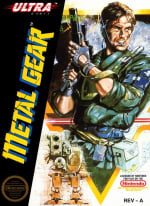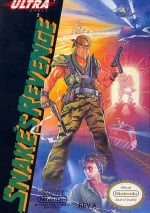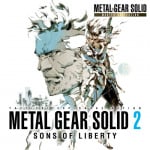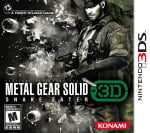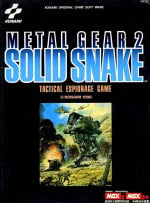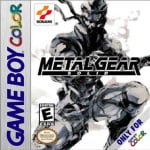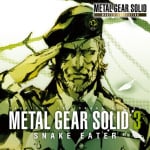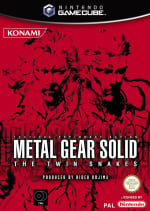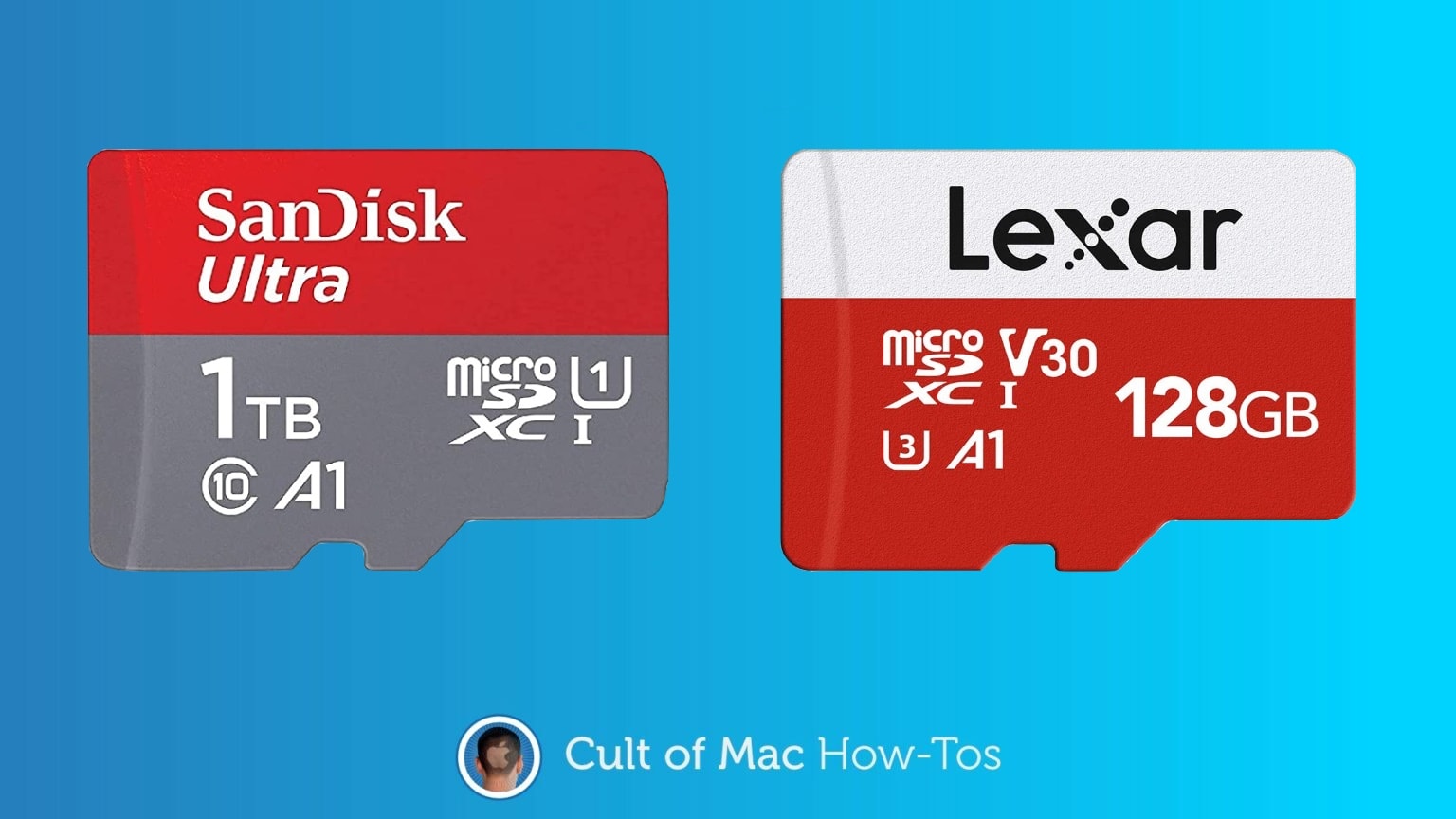
Don’t forget, even after publication, you have the power to potentially alter this ranking in real-time by assigning each game your score using the Nintendo Life 10-point system. Simply click on the star icon on each entry and choose the score you think best fits.
For now, let’s dive into the best Metal Gear games on Nintendo systems. Just don’t let anybody see you, Snake.

Publisher: Ultra Games / Developer: Konami
The biggest thing going against the NES version of Metal Gear is, of course, the simple fact that it has been disowned by franchise creator Hideo Kojima and is not considered canon. Other than that, it’s not that bad. The bones of the original MSX game are still here and it fundamentally still plays pretty well. It’s a little on the short side, as are many NES games, but there’s still a good deal of fun to be had here if you’re inclined to dive into one of the franchise’s more curious entries.

Publisher: Ultra Games / Developer: Konami
Snake’s Revenge gets a bad rap for simply being the direct sequel to the non-canonical Metal Gear, thus making it one of the few games not to involve Hideo Kojima. Yes, it’s got a rather forgettable plot compared to the mainline series, but we won’t say no to a cybernetically enhanced version of Big Boss. We can’t wholeheartedly recommend it as a must-play, but for those looking to experience everything the Metal Gear franchise has to offer, it’s not a bad way to spend a couple of hours.

Publisher: Konami / Developer: Konami
Rarely has there ever been such a drastic improvement regarding visuals and gameplay than with Metal Gear Solid 2: Sons of Liberty. It boasts a wide range of optional mechanics that, while certainly a bit fiddly for newcomers, result in a stellar gameplay experience. The story hits many of the same beats as the original PS1 classic, yet still manages to be original and engaging, with frighteningly prescient commentary on the dangers of AI. The major downside with this release on Switch is the 30fps performance, which may feel fine in practice but is still immensely disappointing in principle.

Publisher: Konami / Developer: Kojima Productions
Metal Gear Solid: Snake Eater 3D may not be the definitive version of Snake’s Cold War escapades but that doesn’t stop it from being a clever, well thought-out and simply great game — frame rate hiccups aside, the impressive and intelligent use of stereoscopic 3D makes the game an absolute joy to look at as well. It’s not often that games as dense and exciting as Snake Eater see the light of day on any platform, which makes the 3DS version all the more worthwhile whether it’s your first romp through the jungle or just to see an old friend from a new perspective.

Publisher: Konami / Developer: Konami
Released all the way back in 1987, the original Metal Gear may look and feel quaint by today’s standards, but it’s nevertheless a game that is remarkably ahead of its time. All the hallmarks of the stealth franchise – including codec calls, memorable boss fights, and even sleeping soldiers- can be felt here like a seed waiting to blossom. It’s a short game, for sure, but it’s a near-essential experience for fans of the franchise; one that satisfyingly bridges the gap between Big Boss and Solid Snake.

Publisher: Konami / Developer: Konami
Release Date: TBA
Metal Gear 2: Solid Snake represents a significant step up in quality over the original Metal Gear, introducing a number of new mechanics that would remain staples of the franchise. Snake can now crawl, guards react to noise, and a radar is present to indicate enemy positions. It also significantly expanded the storyline, introducing key players such as Gray Fox and Roy Campbell, who would both go on to be important characters in future titles. If you can stomach the repetitive music in this one, it’s definitely worth checking out.

Publisher: Konami / Developer: Konami
Shifting the perspective from Solid’s 3D back to the series’ 1987 roots, it’s incredible just how faithful this 8-bit portable Metal Gear Solid is to both the 2D games of the MSX/NES and the later polygonal PlayStation entries in terms of gameplay, tone and aesthetic. Lengthy, challenging and rewarding, MGS GBC is far and away one of the best carts you can buy for your Game Boy Color.

Publisher: Konami / Developer: Konami
Metal Gear Solid 3: Snake Eater was a landmark achievement back in 2004 and remains so almost two decades later. It represents a significant shift in gameplay style from the previous two games, which might prove overwhelming for newcomers, but ultimately makes this one of the most involving Metal Gear titles available. The 30fps performance on Switch is certainly disappointing in principle, but the gameplay holds up regardless, making this a must-play if you’re wondering what all the fuss is about

Publisher: Konami / Developer: Silicon Knights
Seeing Metal Gear Solid — a game synonymous with Sony’s PlayStation — on a Nintendo console was a very welcome, if jarring, experience back in 2004. Metal Gear Solid: The Twin Snakes was developed in the main by Silicon Knights, the same studio behind Eternal Darkness, and incorporated aspects of gameplay from Sons of Liberty into the original MGS game. It also boasts obvious graphical upgrades and entirely re-recorded dialogue featuring almost all the original cast. The new additions were generally well-received, although the gameplay additions arguably trivialised some of the original game’s difficulty. Still, it’s a fine version of a classic and well worth adding to your collection (although tracking it down for a sensible price these days is a mission worthy of Solid Snake himself).

Publisher: Konami / Developer: Konami
Playing Metal Gear Solid on the Switch in 2023 serves as a stark reminder of why the game is considered one of the greatest of all time, but it also highlights some of the ways it has aged in the decades since. With its release on Switch, Konami has opted to remain as faithful as possible to the original game, which means there’s certainly some room for graphical and gameplay improvements. That said, the release also includes some tasty extras, such as the VR/Special Missions expansion and the Japan-only Integral release. If you can stomach the blocky visuals and quaint gameplay, it’s a must-buy.
Frequently Asked Questions
Which Metal Gear game should I play first?
It’s really up to you, but there are two jumping-off points if you want to fully appreciate the story. You can either start from the very beginning of the chronology with Metal Gear Solid 3: Snake Eater or begin with Solid Snake’s journey in Metal Gear.
If you can’t stomach the retro aesthetics in the MSX games, however, then Metal Gear Solid is also a perfectly reasonable place to start.
What’s the difference between Metal Gear Solid and Metal Gear Solid: Twin Snakes?
Metal Gear Solid is the OG release, which launched on the PS1 back in 1998. It was developed by Konami Computer Entertainment Japan seven years before the formation of Kojima Productions. That said, Hideo Kojima was still the director of this game.
The Twin Snakes, meanwhile, is a remake that was released exclusively for the GameCube and was developed by the now-defunct Silicon Knights, with guidance from both Hideo Kojima and Nintendo’s own Shigeru Miyamoto. The remake is largely faithful to the original, but introduces mechanics first seen in MGS2: Sons of Liberty, such as hiding in lockers, holding up guards, and first-person aiming.
It also included vastly different cutscenes from film director Ryuhei Kitamura, who made liberal use of the bullet-time effect popularised by The Matrix. This was met with mixed reactions from fans.
Which Metal Gear games aren’t part of the official canon?
There are three games featured in our list that are not part of the official canon: The NES version of Metal Gear, Snake’s Revenge, and Metal Gear Solid: Ghost Babel for the Game Boy Color.
None of the games included any creative input from Hideo Kojima, and are affectionately considered as ‘alternate timelines’ from the mainline series.
Where are the more recent Metal Gear Solid games?
Well, simply put, they’re just not available on Nintendo systems… yet. It’s presumed that Konami will release a second volume for its Master Collection compilation, and rumours at this stage point to the inclusion of Metal Gear Solid 4: Guns of the Patriots, Metal Gear Solid: Peace Walker, and Metal Gear Solid 5: The Phantom Pain.
So, let’s give it some time, but it does seem like we’ll be adding a few more games to our ranking in the future. Let’s hope, anyway.
Don’t forget, even after publication, you have the power to potentially alter this ranking in real-time by assigning each game your score using the Nintendo Life 10-point system. Simply click on the star icon on each entry and choose the score you think best fits.
For now, let’s dive into the best Metal Gear games on Nintendo systems. Just don’t let anybody see you, Snake.

Publisher: Ultra Games / Developer: Konami
The biggest thing going against the NES version of Metal Gear is, of course, the simple fact that it has been disowned by franchise creator Hideo Kojima and is not considered canon. Other than that, it’s not that bad. The bones of the original MSX game are still here and it fundamentally still plays pretty well. It’s a little on the short side, as are many NES games, but there’s still a good deal of fun to be had here if you’re inclined to dive into one of the franchise’s more curious entries.

Publisher: Ultra Games / Developer: Konami
Snake’s Revenge gets a bad rap for simply being the direct sequel to the non-canonical Metal Gear, thus making it one of the few games not to involve Hideo Kojima. Yes, it’s got a rather forgettable plot compared to the mainline series, but we won’t say no to a cybernetically enhanced version of Big Boss. We can’t wholeheartedly recommend it as a must-play, but for those looking to experience everything the Metal Gear franchise has to offer, it’s not a bad way to spend a couple of hours.

Publisher: Konami / Developer: Konami
Rarely has there ever been such a drastic improvement regarding visuals and gameplay than with Metal Gear Solid 2: Sons of Liberty. It boasts a wide range of optional mechanics that, while certainly a bit fiddly for newcomers, result in a stellar gameplay experience. The story hits many of the same beats as the original PS1 classic, yet still manages to be original and engaging, with frighteningly prescient commentary on the dangers of AI. The major downside with this release on Switch is the 30fps performance, which may feel fine in practice but is still immensely disappointing in principle.

Publisher: Konami / Developer: Kojima Productions
Metal Gear Solid: Snake Eater 3D may not be the definitive version of Snake’s Cold War escapades but that doesn’t stop it from being a clever, well thought-out and simply great game — frame rate hiccups aside, the impressive and intelligent use of stereoscopic 3D makes the game an absolute joy to look at as well. It’s not often that games as dense and exciting as Snake Eater see the light of day on any platform, which makes the 3DS version all the more worthwhile whether it’s your first romp through the jungle or just to see an old friend from a new perspective.

Publisher: Konami / Developer: Konami
Released all the way back in 1987, the original Metal Gear may look and feel quaint by today’s standards, but it’s nevertheless a game that is remarkably ahead of its time. All the hallmarks of the stealth franchise – including codec calls, memorable boss fights, and even sleeping soldiers- can be felt here like a seed waiting to blossom. It’s a short game, for sure, but it’s a near-essential experience for fans of the franchise; one that satisfyingly bridges the gap between Big Boss and Solid Snake.

Publisher: Konami / Developer: Konami
Release Date: TBA
Metal Gear 2: Solid Snake represents a significant step up in quality over the original Metal Gear, introducing a number of new mechanics that would remain staples of the franchise. Snake can now crawl, guards react to noise, and a radar is present to indicate enemy positions. It also significantly expanded the storyline, introducing key players such as Gray Fox and Roy Campbell, who would both go on to be important characters in future titles. If you can stomach the repetitive music in this one, it’s definitely worth checking out.

Publisher: Konami / Developer: Konami
Shifting the perspective from Solid’s 3D back to the series’ 1987 roots, it’s incredible just how faithful this 8-bit portable Metal Gear Solid is to both the 2D games of the MSX/NES and the later polygonal PlayStation entries in terms of gameplay, tone and aesthetic. Lengthy, challenging and rewarding, MGS GBC is far and away one of the best carts you can buy for your Game Boy Color.

Publisher: Konami / Developer: Konami
Metal Gear Solid 3: Snake Eater was a landmark achievement back in 2004 and remains so almost two decades later. It represents a significant shift in gameplay style from the previous two games, which might prove overwhelming for newcomers, but ultimately makes this one of the most involving Metal Gear titles available. The 30fps performance on Switch is certainly disappointing in principle, but the gameplay holds up regardless, making this a must-play if you’re wondering what all the fuss is about

Publisher: Konami / Developer: Silicon Knights
Seeing Metal Gear Solid — a game synonymous with Sony’s PlayStation — on a Nintendo console was a very welcome, if jarring, experience back in 2004. Metal Gear Solid: The Twin Snakes was developed in the main by Silicon Knights, the same studio behind Eternal Darkness, and incorporated aspects of gameplay from Sons of Liberty into the original MGS game. It also boasts obvious graphical upgrades and entirely re-recorded dialogue featuring almost all the original cast. The new additions were generally well-received, although the gameplay additions arguably trivialised some of the original game’s difficulty. Still, it’s a fine version of a classic and well worth adding to your collection (although tracking it down for a sensible price these days is a mission worthy of Solid Snake himself).

Publisher: Konami / Developer: Konami
Playing Metal Gear Solid on the Switch in 2023 serves as a stark reminder of why the game is considered one of the greatest of all time, but it also highlights some of the ways it has aged in the decades since. With its release on Switch, Konami has opted to remain as faithful as possible to the original game, which means there’s certainly some room for graphical and gameplay improvements. That said, the release also includes some tasty extras, such as the VR/Special Missions expansion and the Japan-only Integral release. If you can stomach the blocky visuals and quaint gameplay, it’s a must-buy.
Frequently Asked Questions
Which Metal Gear game should I play first?
It’s really up to you, but there are two jumping-off points if you want to fully appreciate the story. You can either start from the very beginning of the chronology with Metal Gear Solid 3: Snake Eater or begin with Solid Snake’s journey in Metal Gear.
If you can’t stomach the retro aesthetics in the MSX games, however, then Metal Gear Solid is also a perfectly reasonable place to start.
What’s the difference between Metal Gear Solid and Metal Gear Solid: Twin Snakes?
Metal Gear Solid is the OG release, which launched on the PS1 back in 1998. It was developed by Konami Computer Entertainment Japan seven years before the formation of Kojima Productions. That said, Hideo Kojima was still the director of this game.
The Twin Snakes, meanwhile, is a remake that was released exclusively for the GameCube and was developed by the now-defunct Silicon Knights, with guidance from both Hideo Kojima and Nintendo’s own Shigeru Miyamoto. The remake is largely faithful to the original, but introduces mechanics first seen in MGS2: Sons of Liberty, such as hiding in lockers, holding up guards, and first-person aiming.
It also included vastly different cutscenes from film director Ryuhei Kitamura, who made liberal use of the bullet-time effect popularised by The Matrix. This was met with mixed reactions from fans.
Which Metal Gear games aren’t part of the official canon?
There are three games featured in our list that are not part of the official canon: The NES version of Metal Gear, Snake’s Revenge, and Metal Gear Solid: Ghost Babel for the Game Boy Color.
None of the games included any creative input from Hideo Kojima, and are affectionately considered as ‘alternate timelines’ from the mainline series.
Where are the more recent Metal Gear Solid games?
Well, simply put, they’re just not available on Nintendo systems… yet. It’s presumed that Konami will release a second volume for its Master Collection compilation, and rumours at this stage point to the inclusion of Metal Gear Solid 4: Guns of the Patriots, Metal Gear Solid: Peace Walker, and Metal Gear Solid 5: The Phantom Pain.
So, let’s give it some time, but it does seem like we’ll be adding a few more games to our ranking in the future. Let’s hope, anyway.

